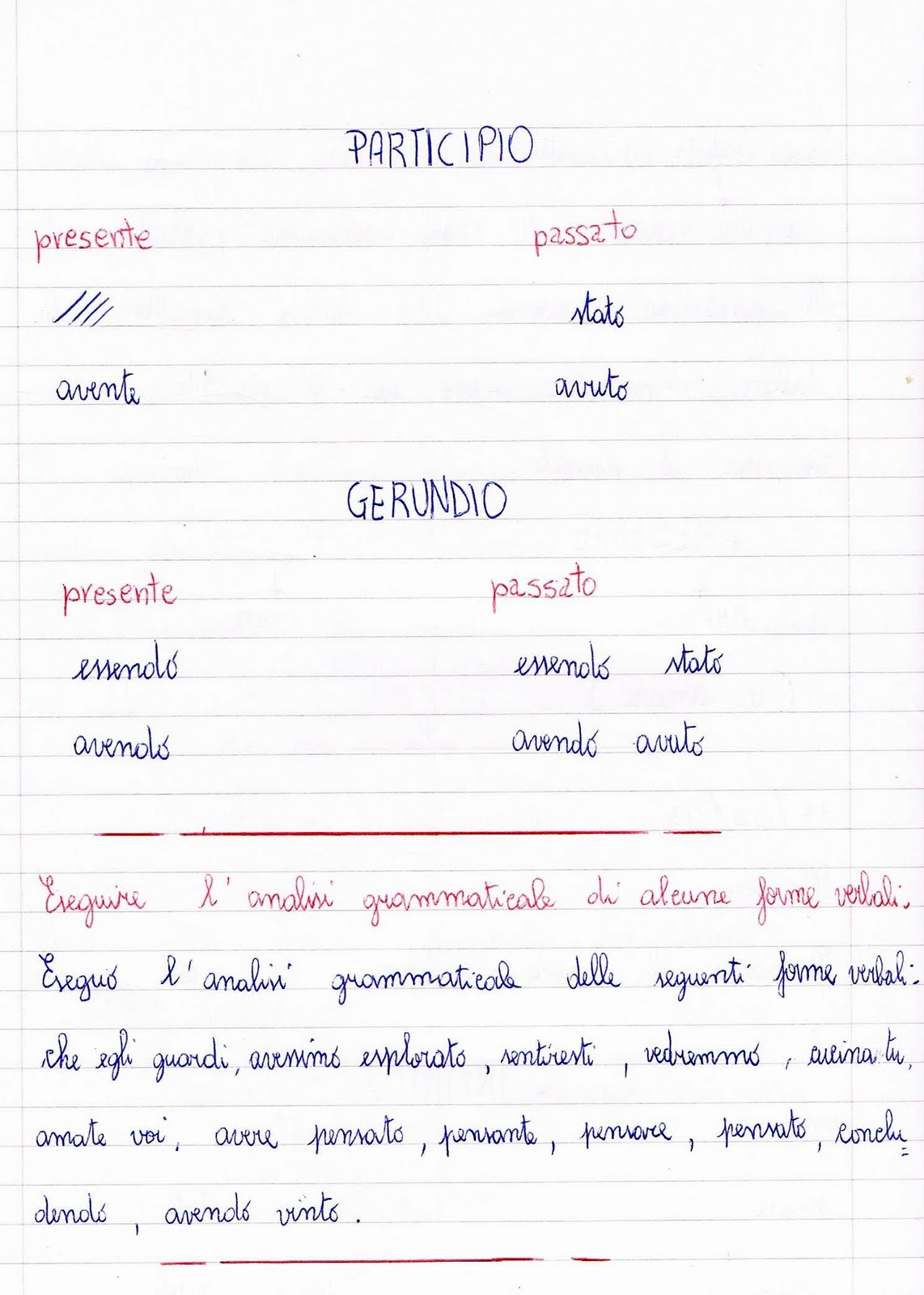
Il ragazzo (che era) arrivato primo alla gara vinse un premio = the guy (who) arrived first at the race won a price (… and it’s attivo if the verb is intransitivo): La ragazza (che era stata) morsa da un serpente ora sta bene = the girl (who has been) bitten by a snake now is fine relative clause (the past participle is passivo if the verb is transitivo): (dopo che era) Uscita di casa, Maria ha preso l’autobus = (after she) went out of the house, Maria took the bus. = (after we’ll have) reached the top (of the mountain), we’ll be able to rest. (dopo che avremo) Raggiunta la cima, potremo riposarci. temporal clause (the past participle expresses antecedence in comparison to the main sentence’s verb) : – as a predicato verbale with proposizioni subordinate implicite (meaning subordinate clauses with the verb used in a “modo indefinito” = that has no person conjugation, as happens with the modo infinito, modo participio and modo gerundio): Lina è stata richiamata ieri dal direttore = Lina has been recalled by the director yesterday. Luca è ammirato da tutti = Luca is admired by everyone ( it is used to express the forma passiva in tenses as: Hai mangiato una bistecca = you ate a steak Sono arrivato in ufficio = I arrived at the office – it is used to create compound tenses with the auxiliary verbs: Un appartamento ammobiliato = a furnished apartment Il concorso è riservato ai laureati = the contest is reserved to the graduated (people) I parenti invitati erano più di cento = the relatives invited were more than 100 | amat -i = loved plu, masc/ also when talking about male+female | amat -e = loved plu, fem.): – a noun or adjective, and differently from the present participle, it works as the “ 4 desinences adjectives” (”aggettivi a 4 desinenze”: ex: amat -a = loved sing, fem. You can find it at the forma attiva, passiva or riflessiva according to each verb. It’s important to notice that with the auxiliary verb avere, the past participle never changes in gender and number. (-ere -> -uto): conten ere -> conten utoģrd conj. (-are -> -ato): am are -> am atoĢnd conj. To build the past participle you only need to change the endings of the verbs at the infinitive, with the fixed desinences of their conjugations:ġst conj. I problemi derivanti (= che derivano) dalla crisi economica = the problems coming (=that come) from the economical crisis Una scatola contenente (=che contiene) dei giochi = a box containing (=that contains) some toys – as a verb in the legal language, or to substitute a proposizione relativa introduced by “che” (that): (you can find also the comparativo and superlativo: for example più invadente invadentissimo) L’ affascinante isola = the fascinating island fem.), i dipendenti (plu, masc.), le dipendenti (plu, fem. Il dipendente (sing, masc.), la dipendente (sing. or fem.), gli insegnanti (plu, masc.), le insegnanti (plu, fem -teacher)


L’ amante (the lover – both a male or a female one) gli amanti (the lovers – males or male+female or males + females…) le amanti (the lovers – all females) – a noun that generally is conjugated as an “ adjective with two desinences” (”aggettivo a due desinenze”): “-e” for the singular masculine and feminine, “-i” for the plural masculine and feminine (the article helps you a bit). It is used only at the forma attiva, and it might work as: *some verbs of the 3rd conjugation though use the ending in -iente: (-ere -> -ente): conten ere -> conten enteģrd conj. (-are -> -ante): am are -> am anteĢnd conj. To build the present participle, you only need to change the endings of the verbs at the infinitive, with the fixed desinences of their conjugations:ġst conj. Let’s talk a little about the present participle and the past participle.


 0 kommentar(er)
0 kommentar(er)
